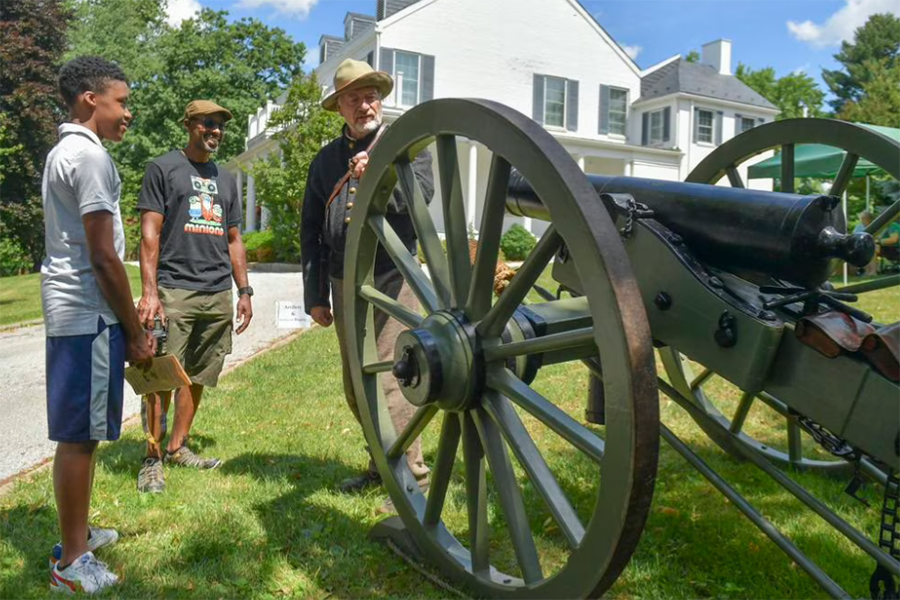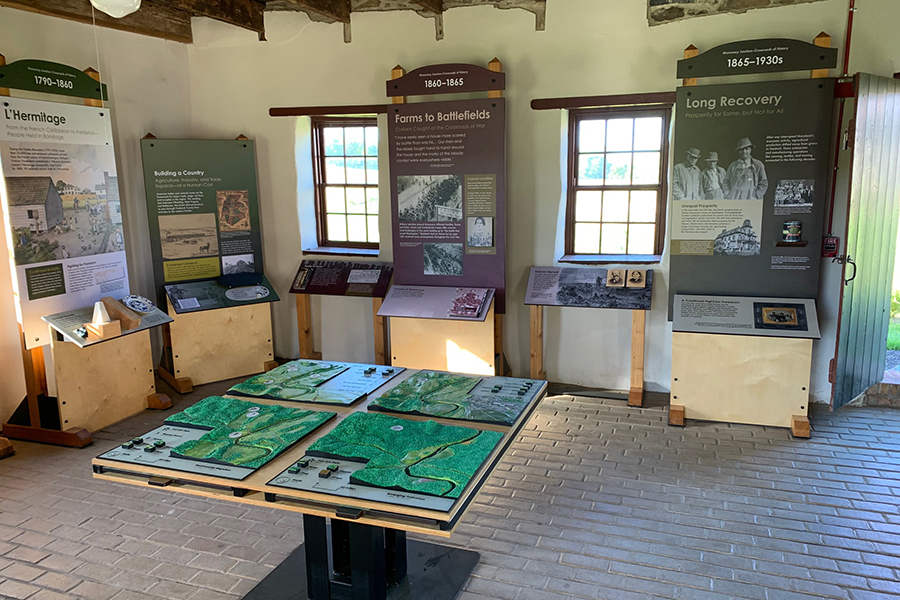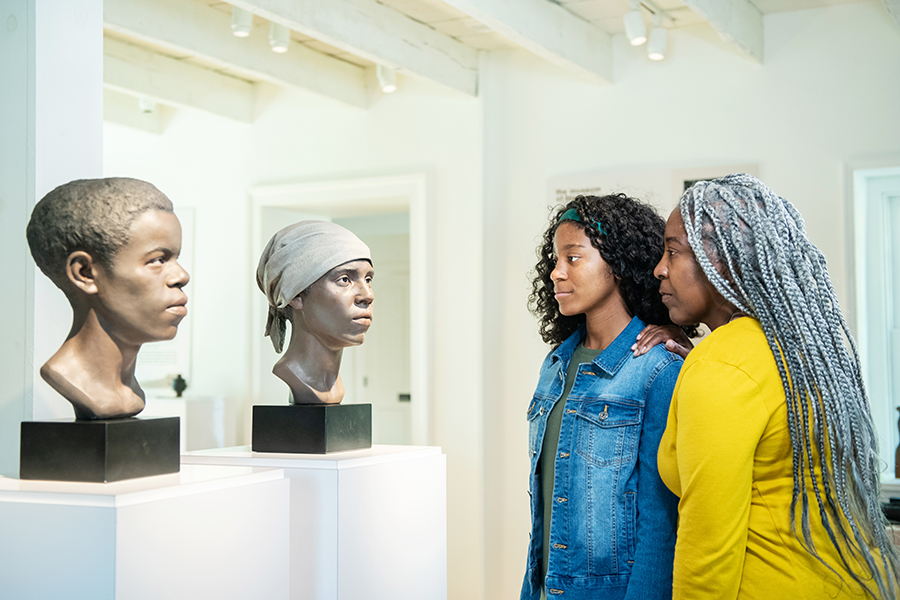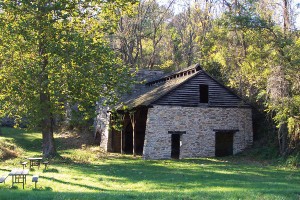These Historic Sites and Charming Small Towns Make for an Incredible Road Trip from Philly

The Schmankerl Stube, a Bavarian restaurant and long-time local favorite in Hagerstown, Maryland.
With the changing of the seasons, there’s nothing better than taking a break from the city and getting out on the open road, especially when there are plenty of sites along our way that can capture our interest. One of the great advantages of living in Philly is that, in addition to fascinating sites within the city, there are lots of sites within a short drive that offer their own fascinating stories, while also providing that sense of wide open space or rustic charm that feels refreshing after too much time among the high-rises.
One of the most historic campaigns in the U.S.–the lead up to and retreat from Gettysburg–happened along rolling fields, farmland, towns and cities in nearby Maryland, and following that campaign’s historic journey makes for one of the loveliest road trips on the East Coast. Thanks to the fact that it’s the 160th anniversary of the Battle of Gettysburg this year, the towns along the whole campaign trail are coming alive with events and festivals to check out, so it’s a great time to get to know the region, whether you’re a history buff or just love small town charm.
When you really understand the story of a place, and see the material of that story in real life, it can make for an experience you’ll remember forever. So we took a look at all the trip destinations that are a must-visit to understand this crucial moment in the Civil War.

Visitors get up close to history at the Corbit’s Charge event in Westminster, Maryland.
Corbit’s Charge
One of the keys to understanding the Gettysburg campaign is how a series of smaller events culminated–and even determined the outcome of–one big event, and there may be no better example of this than Corbit’s Charge, which occurred in Westminster, Maryland on June 28, 1863. The small battle may have impacted the arrival of Confederate reinforcements, and thereby helped to hand the battle to the Union.
This year, Corbit’s Charge is celebrating its 160th anniversary with a wide variety of activities, from hosting presentations, reenactments, tours and military demonstrations, to offering up the wares of artisans and craftspeople. Concerts and children’s activities ensure the event is fun for the whole family.
“Our event is geared to everyone from seasoned historians to children. Each year historians have noted that they learned something new by visiting our event,” says Steve Carney, organizer of the event. “We have a junior historian program for youth visitors to get a hands-on experience with history, a presentation on women’s fashion of the era, historical artifacts and displays, and a concert by the Antebellum Marine Band. There is a little bit of everything which could interest visitors to the event.”

The functioning grist mill at Union Mills Homestead; the site hosts an annual Civil War encampment.
Union Mills
The Battle of Gettysburg was critical as it marked General Robert E. Lee’s second, failed attempt to invade the North. Union Mills captures the significance of how that effort ripped through small towns and everyday lives–and their Citizen Meets Soldier event on July 15 and 16 brings it to life. The reenactment this summer will be presented as an encampment, representing soldiers’ lives on a site where both Confederate and Union sympathizers lived. You’ll see historical interpreters and historic displays populating the site, which is a must-stop on a normal day. It’s worth a visit in its own right, thanks to tours of the historic Shriver Homestead (with its original furnishings), blacksmiths and woodworkers performing historical demonstrations, and a working grist mill.
Seton Shrine
Uncovering those stories of everyday life is critical to understanding the Battle of Gettysburg, and especially important when understanding the role of those who are traditionally neglected by textbooks.
“It’s not just white guys in uniform shooting at each other,” says Drew Gruber, executive director of Civil War Trails, which creates historical signage at hundreds of sites of the Civil War. “Women’s narratives are very much intertwined with the Civil War.”
On that front, Seton Shrine in Emmitsburg in Northern Frederick County is a great spot to experience those narratives. The shrine to the first American-born saint, you’ll learn how the Daughters and Sisters of Charity–the ministry founded by Elizabeth Ann Seton–aided Civil War soldiers through both healing and spiritual practices, at times risking their own lives in the process. The shrine conveys their stories through full-size dioramas, maps and personal accounts, as well as artifacts.

Exhibits at the Thomas Farm on Monocacy National Battlefield, including the history of the United States Colored Troops recruiting station that stood on the land that is now the National Battlefield.
Monocacy National Battlefield
It’s important to understand that the Civil War was not only a fight for freedom for many enslaved people–as the Confederacy advanced, it also represented the very real threat of a return to slavery for those who were already free.
“People of color are living in this section of Maryland when that army in Northern Virginia crosses into a new country over the Potomac River, and this causes angst and anxiety in these communities of color,” Gruber says. “Because that army is picking up people of color and ushering them back into the South to be reinstituted into slavery.”
Faced with the threat of slavery (and especially after the Emancipation Proclamation pointed to its potential end), many African-Americans were inspired to fight–and United States Colored Troops recruiting stations were the entry point for many African American men to join the fight against slavery by enlisting in the Union Army. One of the recruiting stations stood on the land that is now Monocacy National Battlefield, and you can learn more of their story there.
In addition, the park located there features a wide variety of activities, from auto tours that inform visitors on the important battle that took place there, to hiking tours and special events. Don’t miss “Juneteenth: From Enslaved to Emancipated” on June 17 this year–a guided hike that follows the paths of those who sought freedom passing through its grounds. Afterwards, the city of Frederick is also worth a stop in itself, thanks to quaint shopping options downtown.
Hagerstown
If you’re interested in diving deeper into that search for freedom, Hagerstown is the place to learn about the Underground Railroad. An urban trail, it showcases the history that’s still standing right in front of you. To prepare, use their online guide to each individual site, and learn about the rich history just beneath the surface, from African-Americans fending off their attackers with arms, to how those who escaped helped change the history of life in America. While there, embrace the shopping offered by a great small city.
“Make sure you build in flex time because each one of these small towns is going to offer you a flavor and a perspective that you can’t get anywhere else,” Gruber says. “You’ll find that if you follow the Civil War trails turn by turn, these local flavors, these local experiences are just going to come alive.”

The Museum of the Iron Worker at the Catoctin Furnace allows visitors to come face to face with history with forensic busts of individuals buried in the nearby cemetery.
Catoctin Furnace
Understanding the importance of history for those who lived under slavery becomes particularly clear by visiting the places where they lived and died. There’s no more powerful way to empathize with someone across the decades, and in Catoctin Furnace, they regularly present events and performances that are designed to make you understand the full import of this crucial period. The preserved village that once belonged to both enslaved and free Africans and African Americans makes the experience emotionally powerful thanks to an audio tour with trained actors, who read aloud interpretive signage as visitors walk to the rediscovered cemetery of those who once lived here.
Williamsport
Visit one of the final Maryland sites involved in the retreat from Gettysburg by going to the town of Williamsport and making a detour to see the site of the Battle of Falling Waters. Falling Waters was home to, by some measures, the final engagement of the Gettysburg campaign and the escape of Lee’s army that may have prolonged the war. Currently, the battlefield is on private property, so tours need to be scheduled ahead of time. As Gruber points out, visiting sites like these that are a part of Civil War Trails can make history visceral.
“You’ll understand that the Union Army really did push themselves to try to capture these Confederates,” Gruber says. “Then you can go to the point where the pontoon bridges allowed the Confederates to escape, and it’s like you’re in this moment from a movie. The water’s rising, and Lee’s army is trying to get across, and you feel like you can hear the Union Army chasing you.”
In addition to the drama, Gruber points out that you can visit the nearby C&O Canal, with its headquarters and a visitor center in the town of Williamsport, for some great hiking and biking. And with all sites along the campaign, it’s always worth checking to see what’s new nearby.
“When you plan the trip, take a look at all the sites along the trail, because many of these sites have great programming throughout the year,” Gruber says. “The trip is educational, but we do want you to get distracted in each one of these towns by the beauty, the shops, the food, the stories, the antiques–that’s all part of the experience.”
This is a paid partnership between Heart of the Civil War Heritage Area and Philadelphia Magazine


